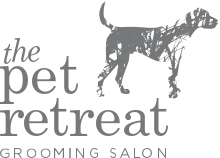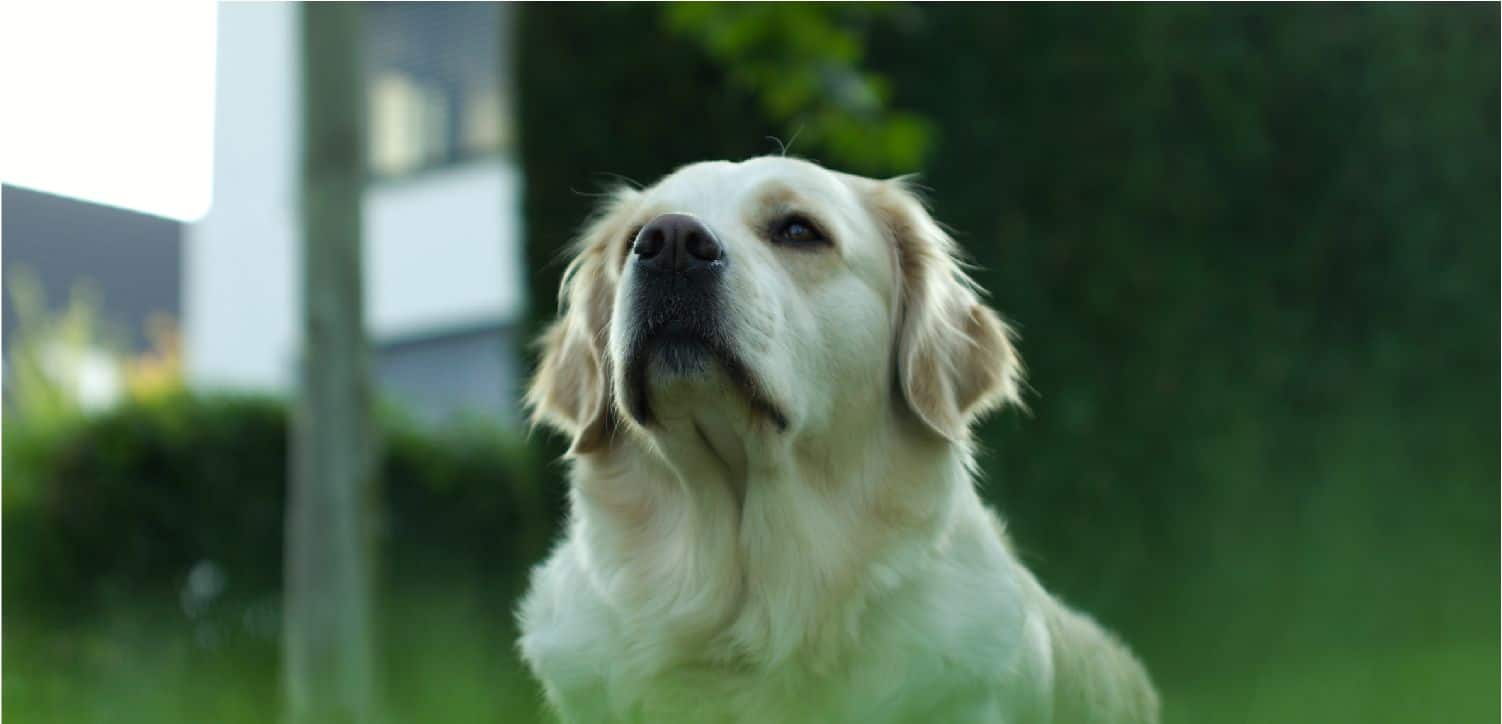A dog’s coat type is one of his most distinguishing features. The nature of the combination coat means it presents unique challenges and requires specific grooming methods to keep your dog looking and feeling great. In this blog we tell you all you need to know about combination coat grooming so that you know what to expect from your next visit to The Pet Retreat and to help keep their coat in check at home.
Contents
- What is a combination coat?
- Benefits of a combination coat
- About combination coat grooming
- Maintaining a combination coat at home
What is a combination coat and what breeds have one?
A combination coat consists of areas of shorter hair, usually on the body, and areas of longer hair, often found on the tail, ears, legs and under the belly. The two types of coat are very easy to tell apart.
The combination coat is a unique type of coat, commonly found on breeds such as:
- Cocker Spaniel
- Golden Retriever
- Border Collie
- Brittany Dog
- Tibetan Spaniel
Benefits and drawbacks of a combination coat
The combination coat is fantastic, but it has one or two things that you’ll need to bear in mind in order to maintain it.
One big benefit of the combination coat is that it is easier to maintain than a long coat, whilst at the same time having attractive areas of long hair that flow as they move. This can create a beautiful picture.
The multiple textures within the coat make the dog soft, fluffy and stunning. However, it’s important that you get into a routine in order to keep on top of coat maintenance. If you do this, the coat should not be too difficult to care for and your pet will look great.
The nature of the coat means that you will also require multiple brushes and combs to maintain the coat at home. This type of coat can also become very static and hard to manage during brushing and drying, which can be effectively managed with an anti-static spray.
The long hair around the ears can make combination coat dogs susceptible to ear problems. Therefore, regular ear checks and cleaning is essential, and this can be done as part of your appointment at The Pet Retreat if required.
Finally, combination coats shed quite a lot of hair in the molting season, and the longer hair between the toes and pads can clump and tangle, trapping grass seeds and other debris.
About combination coat grooming
For combination coat grooming, you’ll want regular visits to the groomers backed up by a solid and consistent home grooming routine. Here’s what you can expect on your visit to The Pet Retreat:
Shampoo
Before shampooing, the groomer will brush over the entire body of your dog to remove any serious mats and tangles. They will then thoroughly wet the dog all over and use a high quality, long haired smoothing shampoo. A good brand for this is For All Dog Kind 2-in-1 Conditioning Shampoo, which will make the coat easier to brush and manage.
The shampoo is massaged into your dog’s coat, creating a lather over all parts of the body. Particular areas of attention include under the front legs, around the back of the ears, back legs and groin, and along the stomach.
Conditioning
Conditioners are also essential to keep the hair strong, shiny and smooth. We recommend Artero Keratin Vital Conditioner, which helps to give strength and shine to the hairs, protects them when brushed and weighs down the coat. This will be selectively applied to longer haired areas. We’ll also use a spray to reduce matting and static before brushing, such as Artero Static Control.
Brushing
Grooming will concentrate on the longer haired areas. These types of coats can also be hand stripped where appropriate, particularly for breeds such as Spaniels and Setters. The groomer will ensure that they use brushes suited to your dog’s coat.
Firstly, they will use a slicker brush to brush the dog’s head, moving down along the body in the direction of the flow of the hair using short sweeps, gently brushing out any tangles. The groomer will then brush the under leg feathers and lift the front leg to allow the leg furnishings to fall in an uninterrupted curtain for easy brushing. Finally, they will brush the featherings on the hind legs and tail, which are always heavily coated. It is normal for there to be a lot of hair trapped in the brush after grooming.
Finally, the groomer will use a comb to tidy the hairs behind the ears and under the neck, working along the sides of the body and around the hindquarters. They will gently comb the feathering under the stomach, and then will lift the legs to comb out the leg furnishings and do the same with the tail.
Cutting and hand stripping
Generally speaking, you wouldn’t cut or clip a combination coated breed, other than for maintenance around some tricky areas. Grooming will usually focus on hand stripping the coat. This process involves pulling out longer dead hairs allowing room for healthy ones to grow through using a stripping knife, stone or finger grip. You can read more about this in our handstripping blog.
Cutting of a combination coat will focus on the longhaired areas that are prone to matting, such as the armpits, below the tail and along the stomach to help maintain a healthy coat. You should never clip a combination coat breed as it can cause skin problems, resulting in the hair not growing back properly.
Other maintenance
The groomer will also conduct a number of important body checks during your appointment, as outlined below:
Feet: We will check the nails and condition of pads, clearing dirt from between the claws. We can also offer pawdicures to help maintain their foot and nail health
- Teeth: Checking the teeth and gums for tartar or inflammation
- Ears: Overhanging ears will be folded back and checked for wax
- Eyes: The groomer will check the eyes and clean out any sticky deposits using warm water on a cotton pad.
Maintaining a combination coat at home
We recommend visiting The Pet Retreat every 6 – 8 weeks with a combination coated dog. In the meantime you’ll also need to maintain a strict home grooming regime to keep your dog’s hair mat free and healthy.
Brushing your dog
Combination coats shed quite a lot of hair in the molting season and regular maintenance grooming is required as some of the hair is of a sufficient length to tangle and mat. When grooming at home, particular attention should be paid to the longer haired areas to ensure mats, tangles and debris are removed from the coat.
We recommend the use of a curved slicker and a pin brush, which are a must for everyday grooming. Wooden pin brushes are gentler on the coat and cause less hair breakage, making them the brush of choice for longer haired areas. A long tooth comb will ensure that all tangles are removed.
Dematting
Dematting tools may also be required for longer areas, such as dematting combs and mat breakers. You should try to brush your dog daily, particularly after any outdoor fun that inevitably leads to tangles and debris gathering in the longer haired areas. Removing mats takes time and patience and you should take care not to cause any discomfort for your dog. If the hair gets too matted, just contact your local Pet Retreat grooming salon!
To get the matted sections out of your dog’s hair, focus on freeing up the ends of the matted section first to reduce discomfort and pulling on your dog’s skin. As the hair frees and the ends gradually start loosening, begin brushing more hair and working closer to the skin until the whole section is mat free. Pay close attention to under their belly and around their legs for matted sections.
Health and shampooing
Daily grooming is also a good opportunity to check the overall health of your dog and look for any ailments.
Depending on how regular you visit the groomers, you may also want to invest in some shampoo for home bathing after muddy walks, whilst some conditioning and anti-static spray is a must.
How Do You Groom Other Types of Dog Coats?
Grooming is an essential part of keeping your dog fit and healthy, regardless of their type of coat. We have created cohesive guides on all of the different types of dog coat, but if you are still unsure, book a complimentary consultation with a member of our expert team and we can advise on the best course of grooming for your pet.
Wiry Coat
Wire coats have a harsh weatherproof top coat and a softer undercoat that helps to insulate the dog against cold and hot weather. In order to maintain this proper coat texture they should be hand stripped rather than clipped in accordance with the growth cycle of the coat. Unlike wool coats, wire coats do shed and are therefore not hypoallergenic however the shedding is easily managed with a proper grooming routine and using the correct tools.
Double Coat
Double coats have a few drawbacks to consider if you’re concerned about keeping your house clean and fur free, however, they are very functional in protecting your dog against bad weather. Shedding is a major issue so a proper grooming routine is essential to ensure your dog feels comfortable. For an in depth grooming guide for dogs with double coats, read our recent blog.
Long Coat
Long haired dogs often have fur that reaches the floor, making for tripping hazards or a constant need for bathing. Attending regular grooming sessions alongside scheduled professional grooming, provides the best opportunity to keep your dog and home as clean as possible. In our guide to grooming long haired dogs, we discuss the recommended intervals between grooming sessions and the steps required to maintain a healthy coat.
Wool Coat
Dog breeds with wool coats include Poodles, Cockapoos and Labradoodles, the curliness allowing for buoyancy and helping water bead off the coat more easily. You should maintain a consistent home grooming routine as well as regular professional appointments to keep your dog happy and healthy. We have a comprehensive guide for wool coats available so you know exactly how to take care of your dog.
Smooth Coat
Smooth coats are considered the easiest type to maintain as its short length means that they don’t get matted or tangled as easily as other types of coats. Beagles, Great Danes and Dalmatians are some of the breeds with smooth coats. To find out how to take care of your smooth coat dog, read our recent blog where we detail the right products and techniques to keep your dog happy and healthy.
Book a Combination Coat Appointment
At The Pet Retreat, we are experts in all kinds of dog coat so why not book a complimentary consultation so we can assess the needs of your dog. We’ll make sure your dog stays comfortable and happy throughout the original assessment and further appointments. Book today for The Pet Retreat experience.

